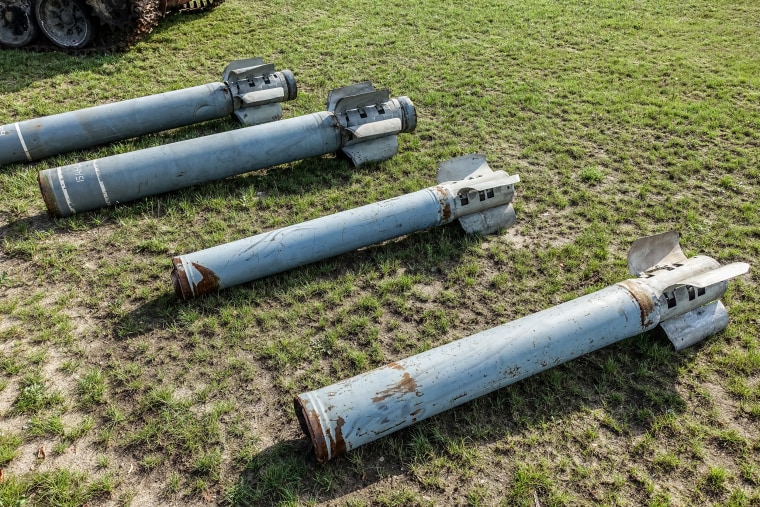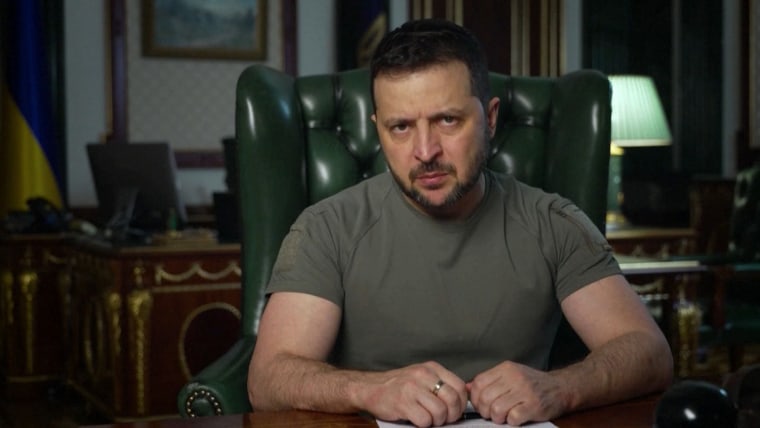Russia and Ukraine are burning through artillery shells and other weapons and ammunition at a rate not seen since the Korean War, said officials, and will need to restock during the long winter to come.
Russia is firing a staggering 20,000 artillery rounds per day, estimates one senior U.S. defense official, while Ukraine is firing from 4,000 to 7,000 rounds daily.
The Ukrainians are quickly burning through their stockpiles of artillery rounds and other ammunition, including for their air defense systems, officials said.
“Ukraine still needs a significant amount of artillery going forward,” said the official. “Consumption rates in this war are very high.”
Ukraine has not yet lost a single HIMARS system, said the official. The U.S. has so far provided 18 of the high-mobility multiple rocket launchers to the Ukrainians.
Russia is also running low on artillery and other equipment, according to a Western official and a U.S. official. Russia has lost a lot of its equipment and weapons, including attack helicopters, and it has been using more of its long-range munitions to strike targets, which could be an indication that it is running through other stocks, according to a Western official. Russian reservists and mobilized forces are even arriving at the front lines without weapons in some cases, the officials said.
Speaking at the Economic Club of New York on Wednesday, Chairman of the Joint Chiefs Gen. Mark Milley said Russia has burned through a lot of equipment, ammunition — and men. Milley said Russia and Ukraine have each suffered more than 100,000 killed or wounded since the war began.
Milley said the human misery brought by the Russian invasion “needs to stop.” The two sides need to recognize victory is not achievable through military means, he argued, and get to a negotiating table. He called the likely slower operational pace in Ukraine this winter “a window of opportunity” for negotiations. Fighting will continue in the cold, but the situation will be “relatively static,” he said.
Air defense
For months U.S. defense and military officials have said one key reason Ukraine has been successful defending against Russia is that it has kept the air space over Ukraine contested from the moment the invasion began. Some officials believe Russia’s inability to take over the country quickly was due in part to the contested airspace keeping many advanced Russian aircraft grounded or restricted to Russian skies. But Ukraine needs more air defense systems, officials said, so it has an integrated network that can defend against everything from drones to missiles flying at various altitudes and distances.
Without enough air defense ammunition and integrated air defense systems, the air superiority in Ukraine is in jeopardy, said the officials. Russia has not been able to use its substantial air forces much since the invasion but if it begins to employ them it could turn the tide of the war and change the nature of the fighting. Ukraine does not have a substantial air force so it needs to make sure it can make it dangerous for Russians to fly.

The U.S. and allies have accelerated efforts to get Ukraine more systems and ammunition, including a re-supply of Ukraine’s Soviet-era air defenses. “Work is ongoing to figure out how much can be produced and how fast, not just for U.S. systems, but for other systems as well,” said a defense official.
Defense Secretary Lloyd Austin and other U.S. officials have been pushing allies and scouring warehouses around the world to keep Ukraine supplied, and some have stepped up.
At a meeting with more than 50 allies in Brussels last month, defense leaders from around the world agreed air defenses were an urgent priority for Ukraine and met for hours to find ways to get Ukraine both new systems and ammunition for their old, Soviet-era systems. The U.S. delivered its first shipment of short to medium range air defense systems called NASAMs Tuesday, according to Ukrainian Defense Minister Oleksii Reznikov, who tweeted that Aspide air defense systems have also arrived and thanked partners in Spain, Norway and the U.S.
Source: | This article originally belongs to Nbcnews.com











